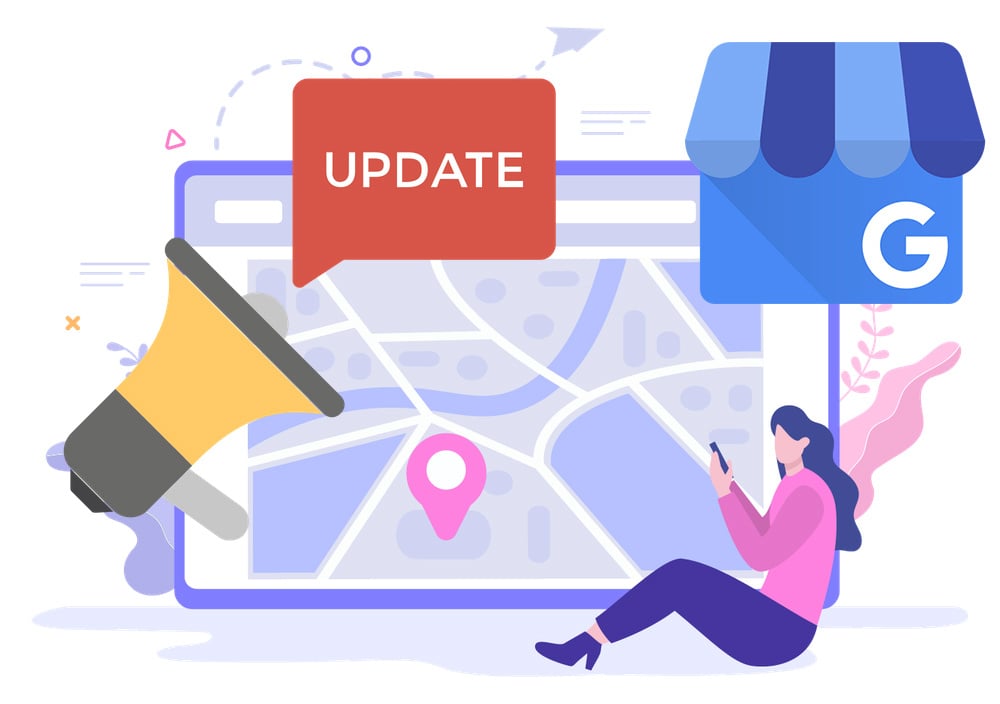Outshine Your Competitors
Discover how GoSite helps business owners improve their online visibility & conquer Google - no tech experience required 😉
The Ultimate Guide to Local Listing Management: Boosting Your Business Online
Boost your business's online presence with our ultimate guide to local listing management! Learn how to dominate local search results.
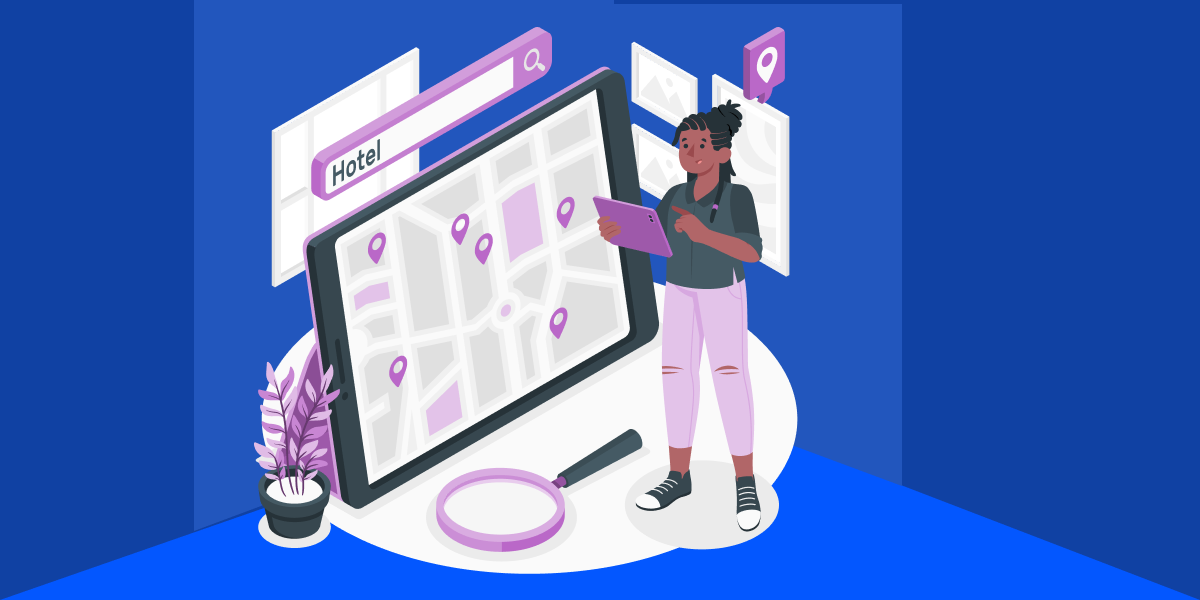
Jump To...
Introduction to Local Listing Management | How to Set Up a Local Business Listing | Best Practices for Optimizing Your Local Business Listing | How to Rank Higher in Google My Business | Tools and Resources for Managing Your Local Business Listings | 10 Common Mistakes to Avoid in Local Listing Management | Conclusion
Local listing management is one of the most effective tactics available today, with 4 in 5 consumers using search engines to find local information. Knowing how to manage your local listings across all platforms can make all the difference when it comes to getting more customers and growing your business.
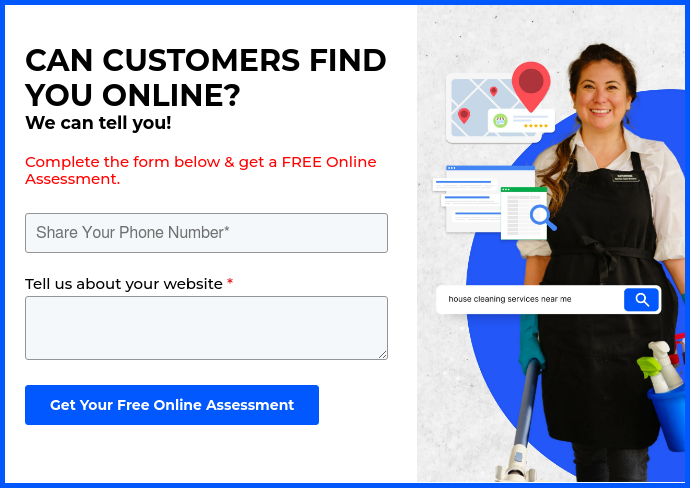
Introduction to Local Listing Management
Local listing management involves creating and managing your business information across various online platforms, such as online directories, search engines, and social media platforms. But what are local listings? Local business listings typically include your business name, address, phone number, website, hours of operation, customer reviews, and other key information that potential customers would look for.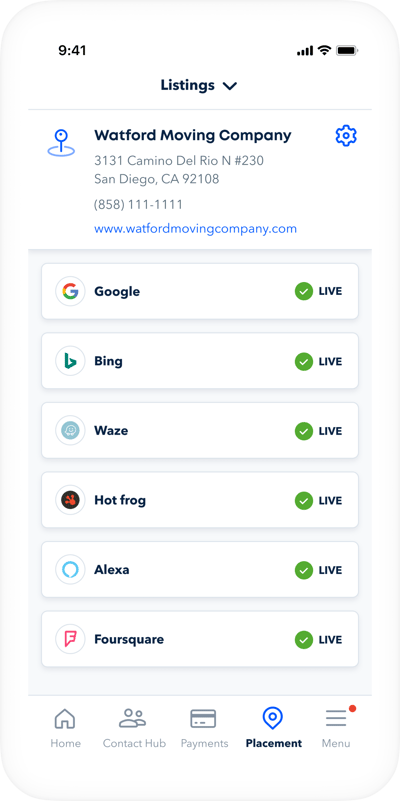 Source: GoSite
Source: GoSite
Especially for small businesses that rely on local customers, having this information available online means that customers can easily find you when they do a local business search. If the information is accurate and consistent across all platforms, it’ll additionally boost your credibility and make it easier to engage with your business.
The Importance of Local Listing Management for Your Business
When you take the time to manage business listings, they can play a huge role in helping your business establish a strong online presence and reach your target audience. Here are some key reasons why it’s important:
- Increased Visibility: With accuracy and consistency comes visibility, which can lead to more website traffic, phone calls, and of course, more sales.
- Improved Local SEO: Local listings are an essential component of local SEO. They improve your chances of ranking higher in local search results, helping you stand out from competitors. With local listings after the 6th ranking position only getting less than 2% of all clicks, you’ll want to be at the top of the list.
- Enhance Customer Trust: Inaccurate or inconsistent listings can create confusion and distrust, potentially leading customers to choose a competitor instead. More than half of consumers say they won’t ever do business with a company if trust is broken.
- Manage Online Reputation: Local business listing management is also an opportunity to manage your online reputation. Doing things like responding to customer reviews demonstrates your commitment to customer satisfaction.
What Local Listings Are There?
There are many local listings available to publish your business, but not all of them will necessarily be a good fit for your business. Here’s an exhaustive list of what’s available for local small business owners:
- Google My Business
- Bing Places for Business
- Better Business Bureau
- Facebook Business
- Angie's List
- HomeAdvisor
- Thumbtack
- Zillow
- Healthgrades
- Yellow Pages
- Citysearch
- Foursquare
- Nextdoor
- Manta
- MerchantCircle
- Superpages
- Whitepages
- Local.com
- DexKnows
- Chamber of Commerce
- Alignable
- Judy's Book
- LocalStack
- ShowMeLocal
- 2findlocal
- Brownbook
- Cylex
- Hotfrog
- Insider Pages
- LocalPages
- Tupalo
- Thomasnet.com
- Yahoo! Local Listings
- Yellowbook
- Infogroup
- LocalSaver
- My Local Services
- OpenTable
- TripAdvisor
- Zomato
- Grubhub
The Role of Local SEO in Local Listing Management
As mentioned, local SEO is a key player in local listing management. For starters, consistent business information helps search engines like Google and Bing verify the legitimacy of your business.
But as well as consistency, there are several other factors that can impact your local SEO rankings. These include the relevance of your business to the search query, how close your business is to the searcher, and the prominence of your business online. Optimizing local listings for all of these factors can improve your chances of reaching the top.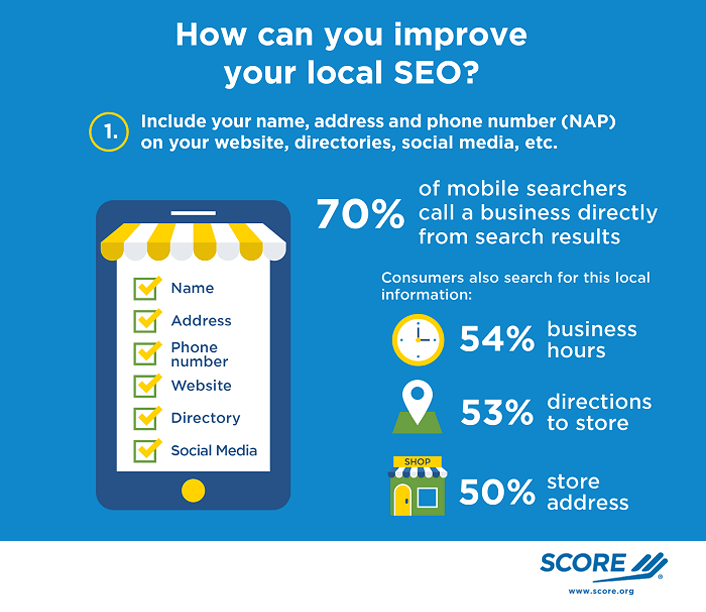 Source: SCORE
Source: SCORE
Since 70% of mobile searchers call a business directly from search results, having this up-to-date contact information works to secure more conversions.
The Role of Keywords in Local Listing Management
Keywords help search engines understand what your business is all about and figure out how relevant it is to searches. To optimize your business listing, you’ll want to use relevant and specific keywords that reflect the services you offer.
If you run a plumbing company, for example, you’ll want to include keywords such as “plumbing,” “drain cleaning,” and “water heater installation.”
You should also get more specific and use location-based keywords, like the name of the city or town you serve, and any nearby neighborhoods and landmarks. If you’re located in Dallas, Texas, you might use keywords such as “Dallas plumber,” “plumbing service in North Dallas,” or “emergency plumbing near the Galleria Mall.” This way, you’ll be more likely to appear in local search results for users in the area.
While keywords are a fantastic tool, there’s also such a thing as “keyword stuffing” - overusing keywords that can harm your search engine rankings. It’s okay to use lots of keywords so long as they feel natural and truly make your listing more clear for your audience.
How to Set Up a Local Business Listing
Setting up a local business listing is the first step towards crafting your online presence. You can follow these essential steps to set one up:
1. Claim or create your listing: Start by claiming your business listing on directories and search engines. Google My Business is the most important directory, but you won’t want to forget about others, such as Bing Places, Apple Maps, and Yelp.
2. Fill out your business information: After you’ve claimed each listing, make sure all your business information is filled out correctly.
3. Optimize your listing: To maximize the effectiveness of your listing, you can include high-quality photos of your business, add a description with relevant keywords, and encourage customer reviews.
4. Verify your listing: Verifying your listing will show that you’re the rightful owner of the business. Depending on the platform, there will be different ways to do so, whether it's receiving a phone call with a verification code or receiving a postcard in the mail.
Best Practices for Optimizing Your Local Business Listing
1. Fill Out as Many Fields as You Can.
The more fields (business name, website URL, business type) you can fill out about your business, the better. Potential customers want a complete picture of your business, so the more information they can get, the higher the likelihood they’ll choose you over your competitors.
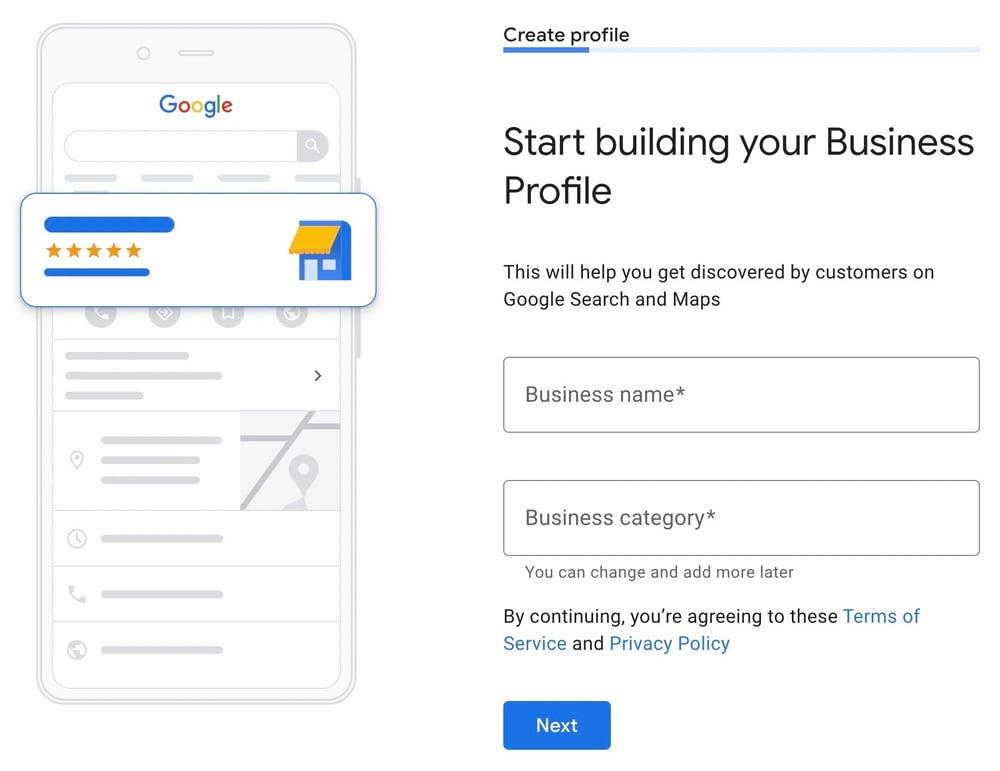 Source: SEMRush and Google
Source: SEMRush and Google
But the benefits of filling out all fields go beyond just providing accurate information. Search engines like Google use this information to determine the relevance and authority of your business and how prominent it should be in relevant local search results.
2. Make Sure Your Information is Always Accurate.
People won't want to find your business listing only to be presented with outdated or incorrect information. That’s why it’s important to ensure that all of your listings are always up-to-date and accurate. This includes verifying the accuracy of contact information, hours of operation, website URL, etc., as well as making sure all images uploaded match your business branding and accurately reflect what you offer.
3. Include Pictures and Videos.
According to Sprout Social, the most engaging types of in-feed social media content are short-form video (66%) and images (61%). Pictures and videos, in general, can greatly enhance your listings and make them more visually appealing. Customers can also get a clearer idea of what to expect from your business.
4. Pick Your Categories Carefully.
Categories are the primary way that search engines and directories determine the relevance of your business to specific search queries - much like keywords. As such, it’s important to choose your categories wisely so your business is visible to the right audience.
Most directories let you choose multiple categories for your business listing. This is something you want to take advantage of, selecting all relevant categories that accurately describe your business. You can also keep up with local search trends and make sure your categories align with them. If your business expands its offering, be sure to review and update your listing so it remains relevant.
5. Get Customer Reviews.
Reviews serve as social proof for potential customers and also influence your local search ranking. Encourage your customers to leave reviews by adding call-to-actions in places that they’ll see them - on your website or in your email signature, for example. Make it easy for customers to do so by providing a direct link to your listing so they’re more inclined to do so.
How to Rank Higher in Google My Business
Google My Business is a free and powerful tool that helps businesses appear in local search results. It’s essentially an online, interactive business card that puts your business on the map - figuratively and literally (on Google Maps).
There are three things that Google uses to determine your local ranking: relevance, distance, and prominence.
- Relevance: Relevance refers to how well the Business Profile matches a search. To up your relevance, your business information should be robust enough for Google to understand your business and match it correctly.
- Distance: While you won’t really be able to get around where a person is located, distance also considers how far each potential search result is from the location used in a search.
- Prominence: Prominence is all about how well-known a business is based on online and offline information. Google takes into account information about a business on the web, review count and review score (the more positive ratings and reviews, the better), as well as general popularity.
Taking into consideration all of the above will ensure your Google Business Profile is optimized and is set up to rank as high as possible on local results.
The Benefits of Customer Reviews and How to Manage Them
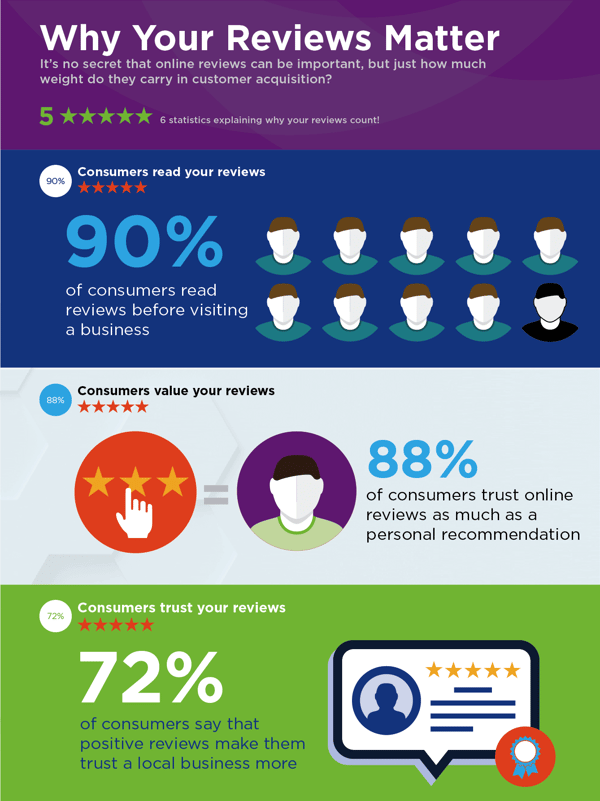 Source: Blue Corona
Source: Blue Corona
Reviews certainly matter - 90% of consumers read reviews before visiting a business, and 72% of consumers say that positive reviews make them trust a local business more. Online customer reviews make up a large part of a business’s reputation. They influence purchasing decisions and also provide valuable feedback for businesses to improve their services and products.
To manage these reviews effectively, you’ll want to keep a close eye on them regularly and respond to all reviews - negative or positive - as soon as you can. Tackling negative reviews professionally and providing solutions will show customers you’re willing to face any issues head-on.
Tools and Resources for Managing Your Local Business Listings
HubSpot Academy: SEO Certification Course (Free)
This free course teaches the basics of SEO, including how to optimize your website for search engines, keyword research, and local SEO. You’ll even learn how to build backlinks to increase your website’s visibility on the search engine results page.
Moz: Local SEO Certification
Moz is a popular SEO tool that offers a free Local SEO Certification course. This comprehensive 6-part Certification focuses on SEO and combines video lessons with tasks and knowledge checks. After the final exam, you’ll get a personalized certificate and LinkedIn badge.
Google Business Help Center (Free)
The Google Business Help Center is a fantastic resource to get all the information you need on your Business Profile on Google, engaging with customers, policies and guidelines, and plenty more.
Facebook Group: Local SEO Strategies & Google My Business Help with Tim Kahlert (Free)
This Facebook group focuses on powerful local SEO and Google My Business strategies. The community consistently discusses topics for freelancers and small business owners to make the most out of Google and social media platforms.
YouTube: SEO Video Show (Free)
Run by 15+ year SEO professional Paul Andre de Vera, the SEO Video Show is a useful place to learn all about on-page and off-page SEO from experts in the industry.
GoSite
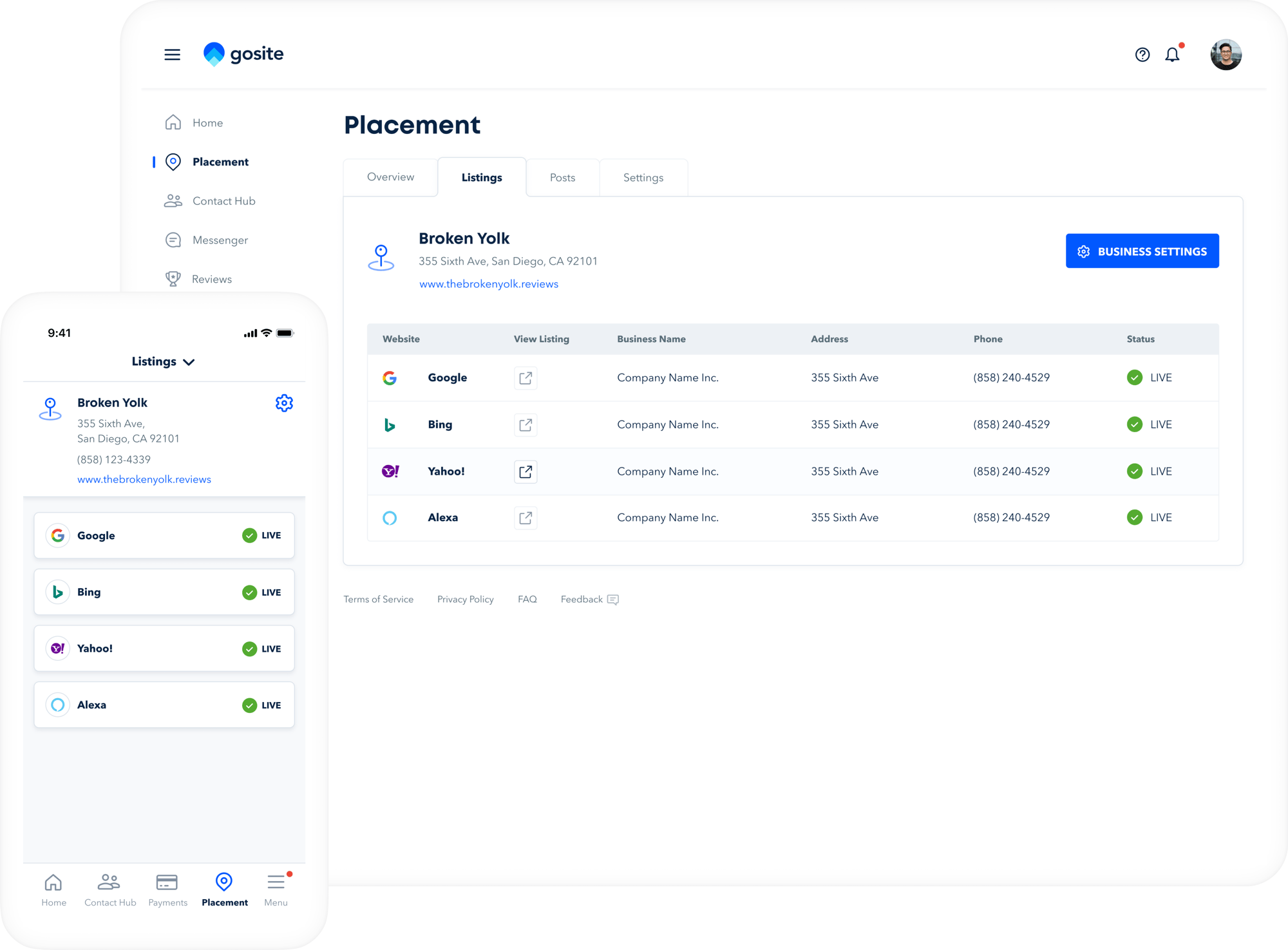
GoSite offers a search engine listing manager that helps businesses get discovered across all the major local SEO directories. With this nifty tool, you can optimize your listings and easily set up and manage your information in one central dashboard.
10 Common Mistakes to Avoid in Local Listing Management
1. Not Maintaining Accurate Business Info on Your Listings
Inaccurate business information can confuse potential customers and hurt your local business online visibility.
2. Not Claiming Your Listings
Claiming your listings is the only way you can get full control over managing your business information. The reality is that many people add business locations to help others find businesses they might be looking for. If you’ve not searched for your business on the leading directories, you might find that you already have a listing that you need to claim, verify, or both.
3. Choosing the Wrong Business Categories
Choosing the wrong categories can make it difficult for customers to find your business online. When choosing categories, you’ll want to be as relevant and specific as possible.
4. Not Prioritizing Your Google Business Profile
Google Business is arguably the best platform for local businesses to connect with potential customers. If you’re strapped on both cash and time, then invest it into making your Google Business profile airtight.
5. Not Verifying Your Google My Business (via Postcard)
Verifying your Google My Business listing is essential to show that you’re a legitimate business. Doing it by postcard is the most secure and accurate way, as it serves as a physical copy of your verification, helps prevent fraud, and ensures Google has the right business address on file.
6. Not Using Industry and Geo-specific Keywords
Relevant industry and geo-specific keywords drive more targeted traffic to your website and increase your chances of converting those visitors into customers.
7. Not Tracking Listing Performance
Not tracking how a listing is doing prevents businesses from understanding how they’re performing in terms of visibility, engagement, and conversions. They may miss out on valuable insights that can help them improve their local SEO and increase sales.
8. Not Keeping Up with Customer Inquiries from Google Business and Facebook Business
Ignoring customer inquiries can have a negative impact on your reputation and success. With customers expecting quick responses when they reach out to businesses online, it can frustrate potential leads and possibly mean missing out on potential revenue.
9. Not Asking for Customer Reviews
Reviews can build credibility for a business. If a business has few or no reviews, customers may be less likely to trust the business. You also want to avoid imbalanced feedback, where only negative feedback is displayed online. Encourage happy customers to share their experiences online to help improve your presence.
10. Not Responding to Reviews
Responding to both positive and negative reviews shows that you value your customers' feedback and are committed to providing excellent customer service.
Conclusion
Throughout this guide, we’ve covered a range of best practices and common mistakes to avoid in local listing management. From maintaining accurate business information to prioritizing your Google My Business profile and responding to customer reviews, there are many factors that can impact your success in local search. By following these tips and strategies, you can stay ahead of the competition and ensure that your business is well-represented online.
%20(1)%20(1).png?width=340&name=Group%2012%20(2)%20(1)%20(1).png)

